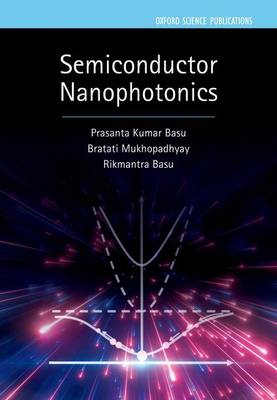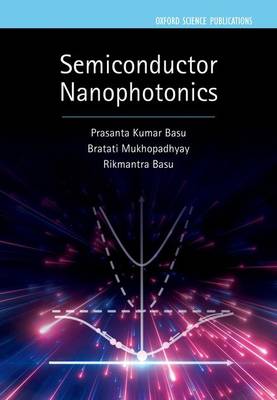
- Retrait gratuit dans votre magasin Club
- 7.000.000 titres dans notre catalogue
- Payer en toute sécurité
- Toujours un magasin près de chez vous
- Retrait gratuit dans votre magasin Club
- 7.000.0000 titres dans notre catalogue
- Payer en toute sécurité
- Toujours un magasin près de chez vous
156,45 €
+ 312 points
Description
Nanometre sized structures made of semiconductors, insulators, and metals and grown by modern growth technologies or by chemical synthesis exhibit novel electronic and optical phenomena due to the confinement of electrons and photons. Strong interactions between electrons and photons in narrow regions lead to inhibited spontaneous emission, thresholdless laser operation, and Bose-Einstein condensation of exciton-polaritons in microcavities. Generation of sub-wavelength radiation by surface plasmon-polaritons at metal-semiconductor interfaces, creation of photonic band gaps in dielectrics, and realization of nanometer sized semiconductor or insulator structures with negative permittivity and permeability, known as metamaterials, are further examples in the area of Nanophotonics. The studies help develop spasers and plasmonic nanolasers of subwavelength dimensions, paving the way to use plasmonics in future data centres and high-speed computers working at THz bandwidth with less than a few fJ/bit dissipation. The present book is aimed at graduate students and researchers providing them with an introductory textbook on Semiconductor Nanophotonics. It gives an introduction to electron-photon interactions in Quantum Wells, Wires, and Dots and then discusses the processes in microcavities, photonic band gap materials, metamaterials, and related applications. The phenomena and device applications under strong light-matter interactions are discussed, mostly by using classical and semi-classical theories. Numerous examples and problems accompany each chapter.
Spécifications
Parties prenantes
- Auteur(s) :
- Editeur:
Contenu
- Nombre de pages :
- 592
- Langue:
- Anglais
- Collection :
Caractéristiques
- EAN:
- 9780198784692
- Date de parution :
- 05-07-22
- Format:
- Livre relié
- Format numérique:
- Genaaid
- Dimensions :
- 177 mm x 250 mm
- Poids :
- 1351 g

Les avis
Nous publions uniquement les avis qui respectent les conditions requises. Consultez nos conditions pour les avis.






